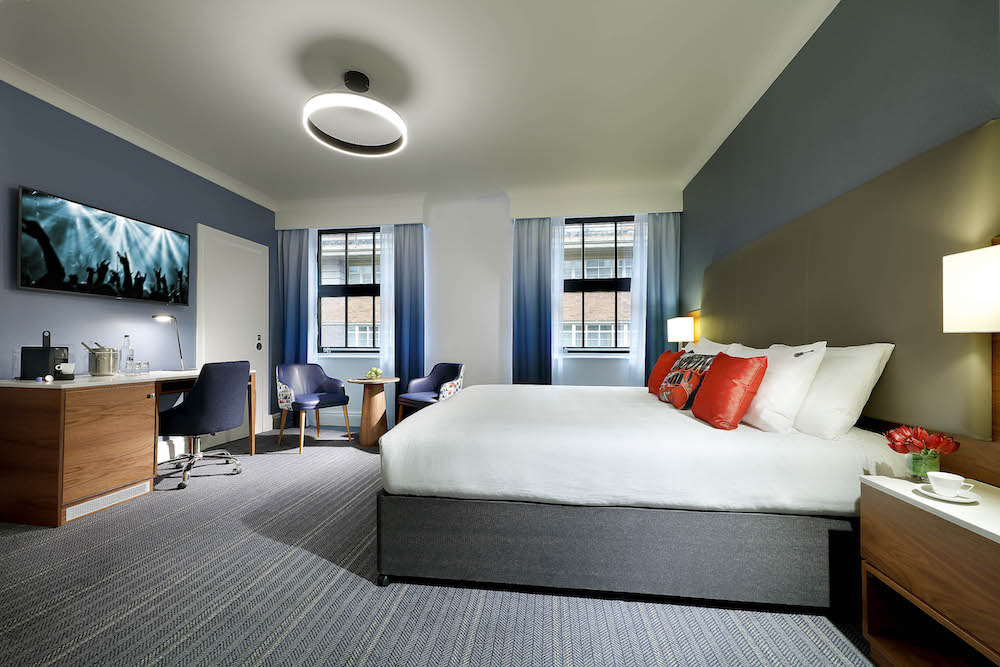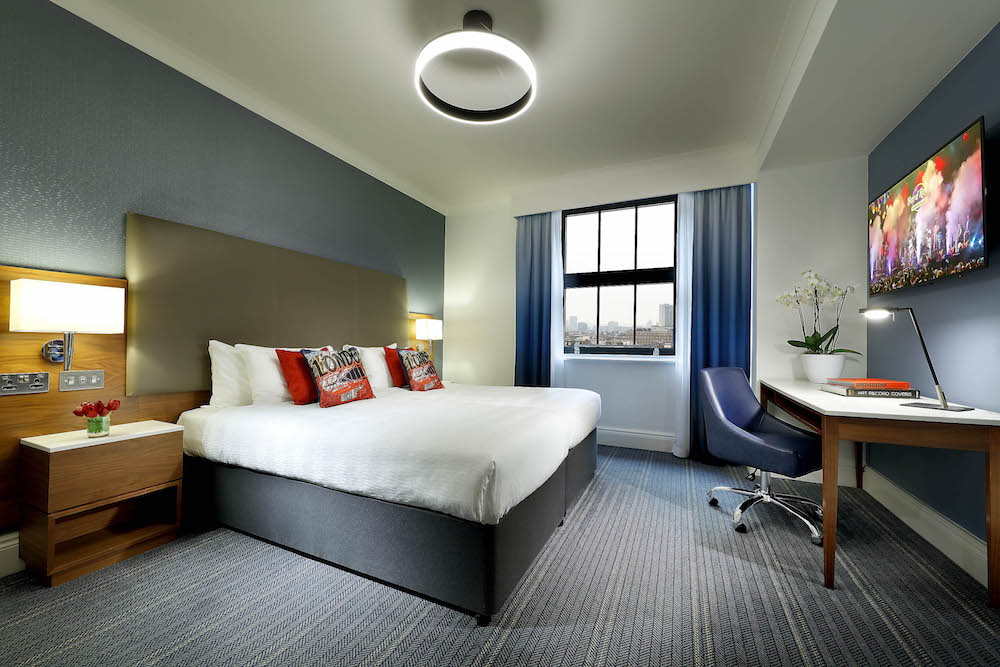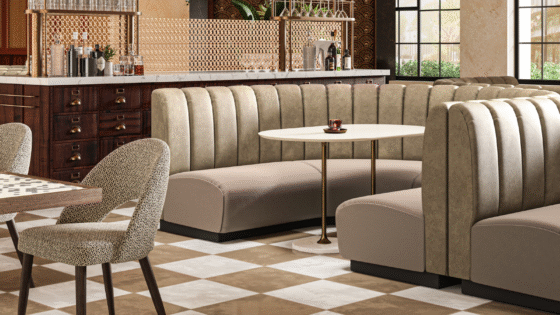There are a lot of things to take into account when specifying fabrics for contract environments and it can sometimes be a bit of a minefield, especially as different sectors often have different requirements and regulations. Edmund Bell explains…
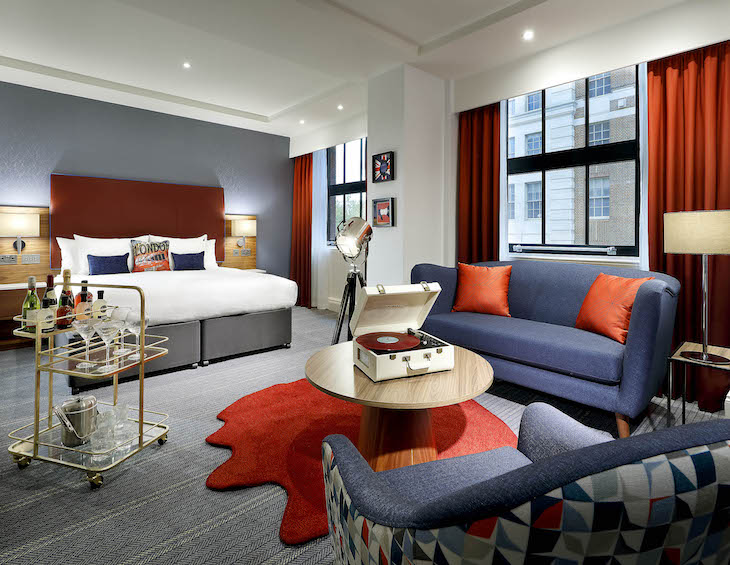
Below are some key considerations to bear in mind when specifying contract fabrics:
Different technical requirements
Technical requirements differ from room to room and for different usages. Here are some examples:
- A chair in a lobby will require a much higher martindale requirement than a chair in a guestroom
- COVID-19 has undoubtably highlighted the need for antimicrobial requirements. To request a copy of Edmund Bells anti-microbial brochure, please email marketing@edmundbell.com
- A fabric used as a bed runner will require a much higher pilling requirement than a fabric used for a curtain
- A curtain used in a seminar room may need to have blackout properties, whereas a curtain a restaurant may not
- Upholstery used in a healthcare environment will need to be bleach cleanable, whereas upholstery used in education may not
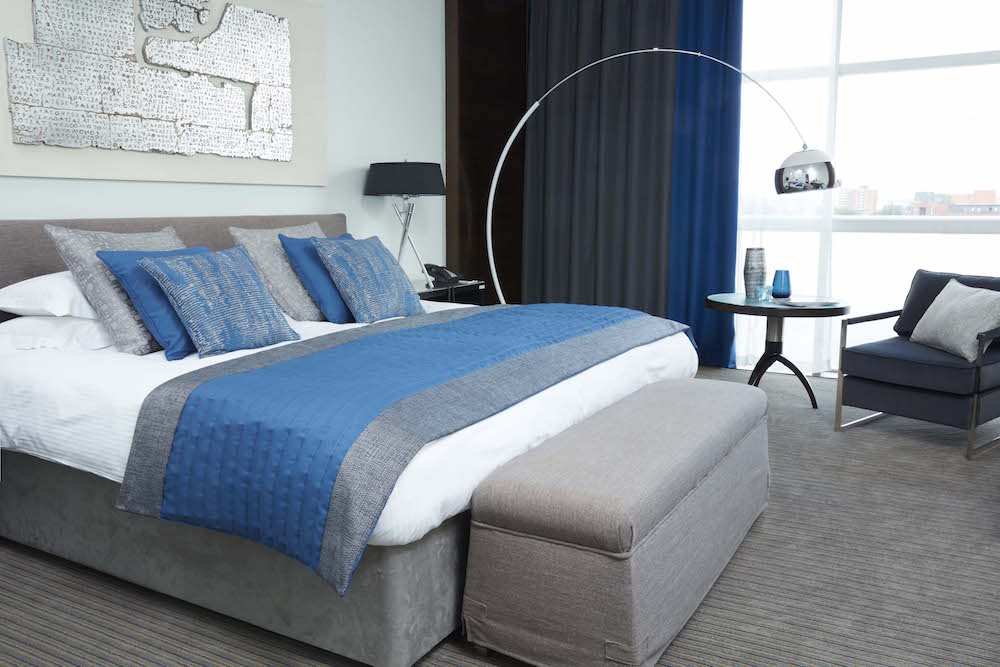
Image credit: Zanzibar Cobalt/Edmund Bell
Flame retardant standards
There is a lot to consider when making sure your fabric meets the correct flame retardant standards – not only are there different standards in each country, they are different again depending on the sector i.e. hospitality, healthcare or marine/cruise, and also different for each usage e.g. upholstery versus curtains versus bedding etc.
Light control
It is important to consider what light control the fabric needs to have depending on the environment it is going into – for sleep, ambience, privacy. If it is for a hotel bedroom for example, a blackout or dimout fabric is ideal to make sure visitors don’t have a disruptive sleep. Sheers or voiles on the other hand offer little light protection but are great for offering privacy or acting as room dividers where necessary.
Sound control
The use of fabrics is a highly effective way to control or enhance the acoustics by controlling noise reverberation in a certain space – they can create ambience acoustically, as well as visually.
Ecological considerations
Sustainable, ethical, ecological – all these factors are becoming increasingly important when selecting a fabric. Some to look out for include:
- Oeko-tex®: a worldwide association of independent institutes for product safety and sustainable production in the textile industry. If a textile article carries the STANDARD 100 label, you can be certain that every component of this article has been tested for harmful substances and that the article therefore is harmless in human ecological terms – this is applicable to all processing steps from yarn to finished product.
- REACH free: a European Union regulation concerning the Registration, Evaluation, Authorisation and restriction of Chemicals.
- Phthalate free: phthalates are chemical compounds used in a multitude of products that demand high performance, long-lasting wear and durability.
- Inherent FR fabrics: inherently FR fabric is made using fibres that naturally contain the flame retardant properties – this means the flame retardant properties cannot be degraded through use or laundering.
Housekeeping needs
Requirements for how a fabric is washed and cared for can again differ for each industry sector. Healthcare environments will no doubt require extra performance features such as anti-microbial, waterproof, stain resistant and washable at 71 degrees for thermal disinfection to name but a few – but these features are becoming more and more desirable for other environments as well such as hospitality.
CASE STUDY: The Hard Rock Hotel London
The highly anticipated Hard Rock Hotel London opened its doors in spring 2019 and Edmund Bell was specified as one of the partners to work with GLH Hotels to supply curtain fabric for all 900 guestrooms.
- Image credit: Roberto Lara Photography
- Image credit: Roberto Lara Photography
The hotel, operated by GLH Hotels Management, is the first UK property for the iconic brand. Built in one of London’s most iconic locations – on the corner of Oxford Street and Park Lane – the hotel puts guests just steps away from the very best London has to offer.
Internationally recognised as a world-class entertainment and lifestyle brand, Hard Rock Hotels offer stylish and contemporary design (hardrockhotels.com) and what better way to do this than with a bespoke design using Edmund Bell’s Printlab service in collaboration with the Hard Rock design team.
Designers at Edmund Bell were tasked with creating two Ombré effect designs; one in blue and one in red – fitting the brief of cutting-edge décor, cool tones and modern design. The design was to be printed onto the chosen base fabric; flame retardant Venus dimout together with an FR blackout lining offering 100% light exclusion. These were then paired with a white FR slub sheer to add an element of privacy without blocking out the light during the day.
Click on the links below for more information about their fabrics used throughout the Hard Rock Hotel London bedrooms:
Sustainability
How Edmund Bell are looking towards the future regarding our efforts around sustainability:
- They are working with more renewable fibres with less environmental impact and the highest quality available.
- Many of their products are Oeko Tex Standard 100 approved; meaning they are completely free of toxic or allergic substances.
- They are working towards complying with the Ethical Trade Initiative (ETI) base code within our supply chain; an internationally recognised code of good labour practice.
Sustainability remains increasingly important to their business objectives.
Edmund Bell are currently offering a FREE online presentation lasting around 40-60 minutes, discussing “Things to bear in mind when specifying fabric for contract projects”. For more information, please email marketing@edmundbell.com
Edmund Bell is one of the brands that has taken advantage of our Industry Support Package. To keep up to date with supplier news, click here.
Main image credit: Roberto Lara Photography

